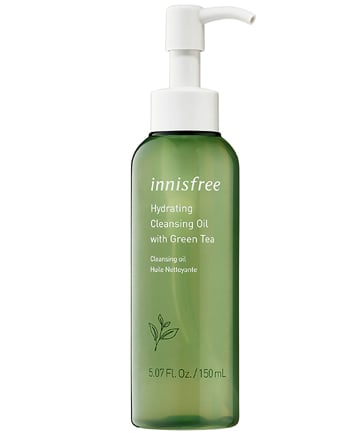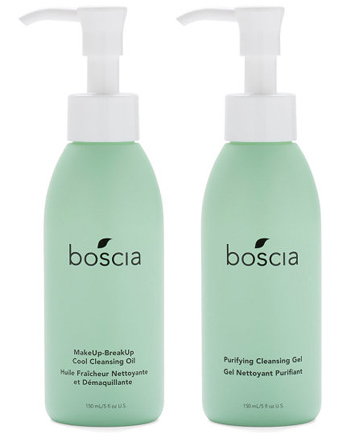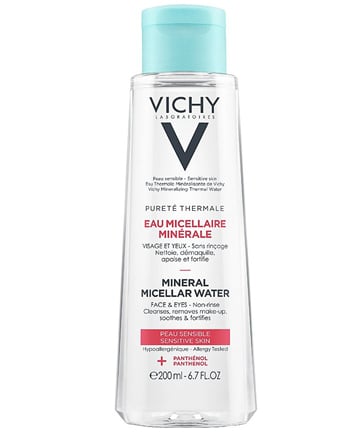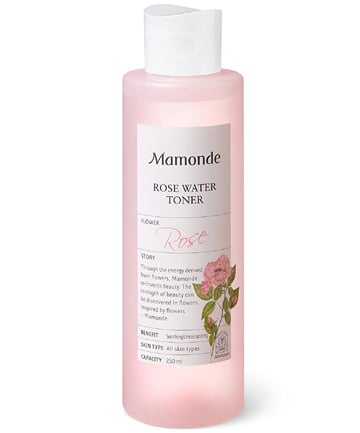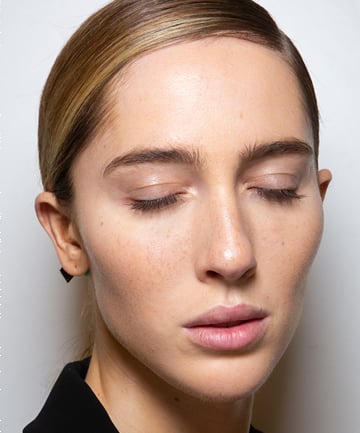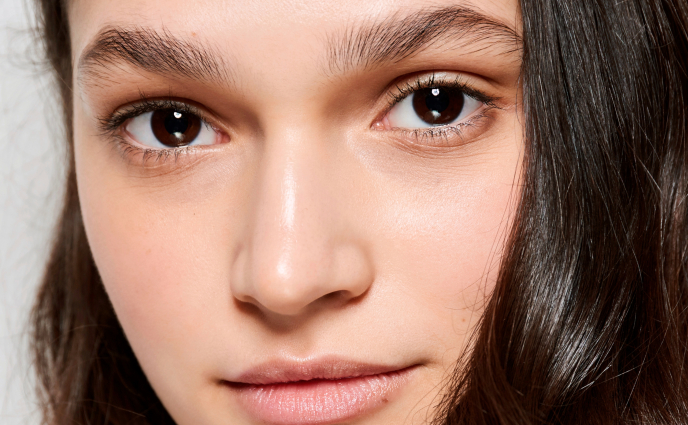Struggling to get sunscreen off the sides of your face or around your nose? You're not alone. Medical aesthetician and founder of Amethyst Skincare Nicole Simpson says that sunscreens of today are made to have staying power. Coola's retail marketing manager Kristine Guanzon elaborates that they are difficult to remove, especially water-resistant ones. But, there are solutions: She says that since sunscreens are typically oil-based, cleansing oils work really well at breaking down sunscreens.
Another bonus? Cleansing oils are gentle and less stripping, so you don't have to worry as much about overdoing it!
If you're not yet a devotee of double cleansing, now could be a good time to try it. Simpson is always a fan of double cleansing. Double cleansing is exactly what it sounds like: Cleansing with two cleansers. Firstly, a cream or oil-based cleanser is used typically followed by a water-based one. The cleansers target different things and rid skin of impurities. Guanzon points out that double cleansing is a good method because the deep cleaning will take care of potential dirt, oil and sweat that can get trapped under many layers of sunscreen.
Worried about drying out skin? "Sunscreens don't normally strip skin of moisture, but overcleansing can," cautions Simpsons. If double cleansing, the first cleanse can be a cream-based hydrating cleanser to avoid disrupting skin's protective barrier and protect against water loss." Nourishing oil cleansers can also work.
Yes, it's called "makeup remover," but that versatile product can also help with taking off sunscreen. Guanzon suggests using it before cleansing. An oil-based makeup remover will be effective in removing oil-based sunscreens in the same way that an oil-based cleanser is.
Similarly, try a micellar water to bust through layers of sunscreen.
Simpson recommends using both a cleanser and a toner to ensure skin is fully cleansed. She cautions it's essential to choose the right products for your skin type so you don't disrupt the skin barrier when removing your SPF.
Toner will remove any remaining residue, plus, it adjusts the pH of skin so that the products layered on afterward absorb and function better.
Chemical sunscreens (ones that absorb into skin then absorb UV rays) and physical sunscreens (those that contain active mineral ingredients, like titanium dioxide or zinc oxide, and sit on top of skin to physically deflect rays) can be slightly different in application and in removal, too.
"Chemical actives will break down over time and are usually easier to wash off, while mineral sunscreens create a physical barrier of protection and require a little bit more work to remove," says Guanzon. Therefore, you might have to employ a little more elbow grease (oil-based cleansers and/or double cleansing) to remove physical-based sunscreens in their entirety.
Simpson says that for long-term daily use, physical sunscreens are usually a great choice because they can be less irritating. It's a trade-off to keep in mind.
Image via Imaxtree


